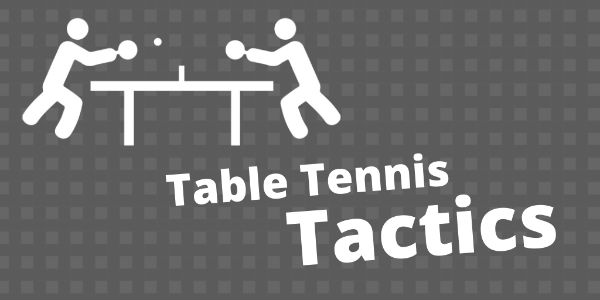This is an updated version of an article I first published in 2015…
In local league table tennis, especially in the lower divisions, you’ll often have to play against pushers. These are players who play a lot of backhand pushes and forehand pushes, again and again and again.
They keep the ball low over the net, with plenty of backspin, making it difficult for you to attack. Even if the ball pops up high, they may wait for the ball to drop and push again rather than attack.
The pusher’s aim is to frustrate you. They want to draw you into a pushing match (which is what they are best at) or force you to attempt a risky attack. The outcome is often an unforced attacking error, frustration, more attacking errors and more frustration.
How do you beat these annoying players? In this blog post I explain three tactics which usually work..
1. Loop, loop and loop some more
A pusher wants to keep you in a backspin rally, so don’t let him/her. If the push is long enough (second bounce is off the table), then you should try and play a topspin attack (or a loop, as it is often called). This is where you brush up the back of the ball to counter the backspin and in the process you change the spin to topspin.
Pushers usually stay quite close to the table (unlike a chopper who will go back and keep defending), so if you get a topspin attack on the table you pose the pusher a problem. The pusher can’t push again, as the ball has lots of topspin. You force the pusher to play a topspin game, which he/she may not be so comfortable with.
Weaker pushers may struggle to return your topspin attack and you will win the point outright. Better pushes may be able to block your topspin attacks, but at least you are changing the dynamics of the match. Changing it from backspin rallies to topspin rallies.
If you find it difficult to play topspin attacks against backspin balls, you need to prioritise developing the correct technique, as it gives you more attacking options. Take a look at this video with Ferenc Horvath, where he explains how to do a forehand loop. And here is another video on the backhand loop.
2. Return serves with flicks
Often, a pusher will serve short or half-long backspin serves. This makes sense for the pusher. He/she wants to start the rally as backspin, to make it easier to keep on pushing.
So an effective tactic is to return these serves by flicking. Once again you are changing the spin from backspin to topspin. It doesn’t have to be an amazing super-fast flick which whizzes past the pusher (although nice if you can do this!). A fairly basic flick will often do. You are simply changing the rhythm and speed of the rally. The pusher wants to play backspin. You change it to topspin.
From my experience, even a basic backhand flick is enough to unsettle a pusher. The pusher can often struggle to adjust to the speed and spin of the service return, either making a mistake or giving a weak ball back, presenting you with an opportunity for another attack.
If flicking is not something you currently do, it’s probably easier to start with the backhand flick. Here’s a video on a basic backhand flick technique.
3. Use topspin serves
Pushers aren’t usually very strong attackers (this is why they push!), so you can use plenty of topspin serves. Both short topspin serves and long topspin serves can be effective.
If you serve topspin, it makes it much harder for a pusher to return the ball back short and low. If a pusher does attempt to push your topspin serve, it will most likely come back higher, giving you an easy ball to attack. And some weaker pushers may struggle to return topspin serves at all.
Stronger pushers, will be able to adjust to your topspin serves and may start blocking or driving the serves back. But at least you have changed the dynamics of the game again. You have changed it from a backspin game (the pusher’s comfort zone) to a topspin game, which will hopefully favour you.
Turn it into a topspin game
The three tactics above all have the same purpose – turn the match into a topspin game. A pusher wants to suck you into long backspin rallies, which he/she has far more chance of winning, as this is the playing style the pusher has perfected over many years. If you can turn it into a topspin game by using loops, flicks and topspin serves, then the pusher can’t use pushes to frustrate you.
Against a weaker pusher, these tactics will allow you to win quite easily. You’ll wonder how you ever found it so difficult.
A stronger pusher can also have a decent blocking or hitting game. So these tactics won’t guarantee you victory, but at least you will be playing a more open topspin game, which will hopefully benefit you more than the pusher (if you like to play open topspin rallies!).
A pusher can be awkward to beat. Every table tennis player faces the challenge of overcoming a pusher at some point in their development. The players who develop a strong topspin game – loops and flicks – tend to find it much easier to beat a pusher. If you don’t feel confident in using loops and flicks, you need to develop these shots. Once you do, beating a pusher becomes much, much easier.


